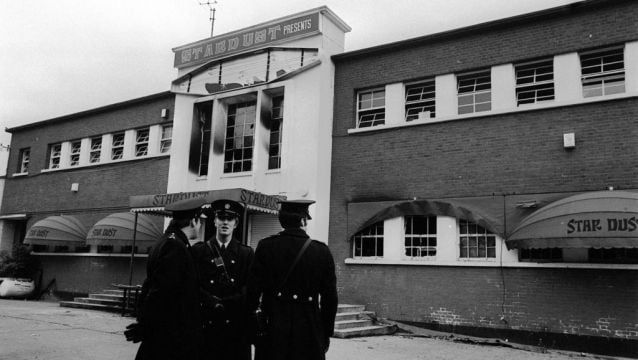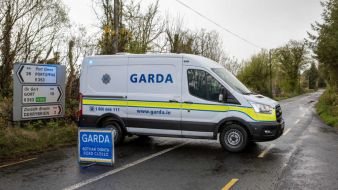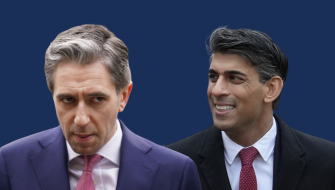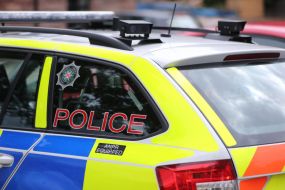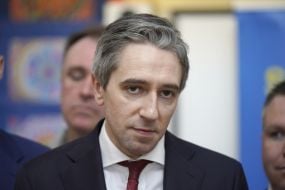A fire investigator has outlined to an inquest jury areas of the Stardust which may have had some influence on “how the fire could have started”, including a badly damaged hot press in the main bar close to where the blaze was first noticed and an electrical outlet located in the West alcove.
However, Dr Will Hutchinson also told the inquest that it is “very important” that “we do not focus on just one answer”.
Dr Hutchinson said the investigation involves looking at all the information and examining whether “we can propose a seat of fire” to show where it is thought the fire could have originated.
The expert witness also highlighted burn patterns seen in photos of a number of fire exit doors at the Stardust would indicate they were not open at an “early stage” of the fire.
Dr Hutchinson, a fire investigator and forensic scientist with Jensen Hughes, has been retained by coroner Dr Myra Cullinane, to investigate the possible causes of the fire.
He outlined to the court on Monday some of the areas which he will be exploring in further detail over the coming days and weeks.
Dr Cullinane told the panel expert witnesses have also been retained by the victims’ families and additional evidence will also be heard from them.
She said that in 2019, then attorney general Seamus Woulfe directed that these fresh inquests be held related to an apparent “insufficiency of inquiry” into the cause or causes of the fire at the Stardust nightclub.
Dr Hutchinson outlined the huge changes in fire investigation since the Stardust blaze and said at the time of the 1981 fire, which claimed the lives of 48 young people when it broke out in the Artane disco, fire investigation was in its “infancy”.
“One of the most important pieces of evidence that I have used during my considerations of the evidence are the expert reports that were presented immediately after the fire or a short time after the fire,” he said.
“These were done by scientists or professionals who were able to give expert opinion on these matters and that is what I have used, and I've had to consider, because I do not have that evidence to look at directly myself.”
Excavation
He said the garda forensic specialist, Detective Garda Seamus Quinn, was responsible for the search and excavation of the scene, which was conducted over four days between February 14th and 17th, 1981.
He said the thrust of the detective’s investigation was to help with the recovery of the remains but also to look at the scene to see whether there was any evidence of a criminal nature and whether an explosive or incendiary device could have been used in the fire, to which he found “no evidence”.
Dr Hutchinson said he also examined a report by a forensic scientist working for the Department of Justice who provided a clear description of the ballroom and its contents, and gave a description of the post fire condition of the exit doors as well as the results of the fire tests which were carried out following the blaze.
He said Varming Mulcahy Reilly Associates (VRMA) were appointed at the time to examine the electrical heating and ventilation systems within the Stardust and their instructions were then later amended to include the origin and cause and development and spread of the fire.
He said he has also considered this when preparing his own report.
The jury were shown photos of each of the six exit doors and Dr Hutchinson said he would outline what he, as a fire investigator, could “take home” from these in terms of the burn patterns and what he could infer from these photographs.
He said the two doors at exit one were not damaged, indicating to him that they were “open at an early stage” of the fire. He said there were also reports from occupants who said that they were able to escape through these doors.
The witness said exit two was the main entrance way in for the patrons on the night of the fire, and it was favoured by the majority of the patrons to exit the building, most likely because it was the way that they got into the building.
He said the two doors either side of the main double doors were badly damaged by fire, indicating that they were closed during the fire.
He said there was also some damage to the main doors – the two central opening doors – which would suggest that they were “not immediately open” at the early stages or closed at some point during the fire which resulted in the damage.
Padlock & chains
In relation to exit three, he said the outer doors on the left show a bottom bolt which is damaged, which “indicates that someone had to force those doors open”.
Dr Hutchinson said the photograph also showed a padlock and chain draped over the push bar.
He said a DJ van that was parked immediately adjacent to the outer doors of exit three would, in his opinion, have made getting away from the building more difficult and potentially resulted in a build up of people trying to escape the corridor.
In relation to the damage to the door, he said it had either been previously been damaged or the door was “locked and unopenable at the time of the fire” and had to be forced while the blaze was underway.
The witness said the left leaf of the door at exit four was relatively undamaged and “therefore I can assume that that door was open from an early stage”, but said in stark contrast, the leaf on the right was badly damaged on the inside.
“So I would assume that that door was not opened from an early stage in the fire it had been subjected to the fire from inside,” he said.
He said the doors at exit five also showed signs of damage indicating they were not open at an early stage. The fire expert said the internal doors at exit six were undamaged indicating they were opened from an early stage and were not subjected to intense fire or heat.
'Flaming droplets'
Other areas which will be explored in more detail, he told the jury, will be the carpet tiles on the wall which did not have a class one rating and melted during the fire, resulting in “flaming droplets”.
The forensic scientist also referred to the curtain used in the Stardust behind which the fire was first noticed. He said in his opinion, the curtain would not have prevented the spread if it had been kept closed as there were gaps around it so it was not “a complete barrier”.
He said they were primarily used as a screen to close off seating areas and when drawn down they prevented people from seeing the fire.
Dr Hutchinson highlighted a number of areas that will be examined in further detail over the coming days, including a hotpress in the main bar close to the area where the fire was first noticed. He said this hotpress was “particularly damaged” in comparison to the rest of the bar, and photographs taken in the aftermath of the blaze were shown to the jury to illustrate this.
He displayed an illustration which showed this hotpress was located close to the approximate area where the fire was first observed.
However, he added: “It should be taken with caution that different witnesses saw the fire starting in different areas” and said, although it was marked with a red circle on a map shown to the jury: “I think we need to be a bit looser in terms of where the fire was first observed.”
“Different witnesses saw it start in different places, but you can see from the proximity there, the middle photograph shows the position in the ceiling void directly above the hot press, a cold water tank and how it's slightly over the edge of the West alcove.”
He told the jury the reason he was showing them this was because it may have “some influence” on a “potential mechanism of how the fire could have started” but said more detail would be given on this at a later stage.
The expert witness also highlighted an electrical outlet that was located in the West alcove and said this will come under more scrutiny later in his presentation when consideration will be given as to whether or not a fire “could have originated from an electrical fault within the West alcove”.
Open mind
Dr Hutchinson said the investigation involves looking at all of the information and examining whether “we can propose a seat of fire” to show where it is thought the fire could have originated.
He outlined some of the questions explored, including: “Do the fire patterns support that based on what's observed, do we go straight to an area where there is the most fire damage, did the fire start there or could it have started somewhere else and spread to that point and the fire damage is more severe in that area just because there happened to be more fuel to the fire.”
The expert witness said it is “very important” that “we do not focus on just one answer; we must consider everything and then we can slowly start to eliminate things that we do not consider possible” while everything else must stay as a possibility.
He said the next step is to test the hypothesis and this may include performing experiments around possible ways the fire may have started.
The final step, Dr Hutchinson said, is to draw conclusions. He told the jury that in doing so, “we very much have to keep an open mind and consider everything”.
The inquest continues on Tuesday.
